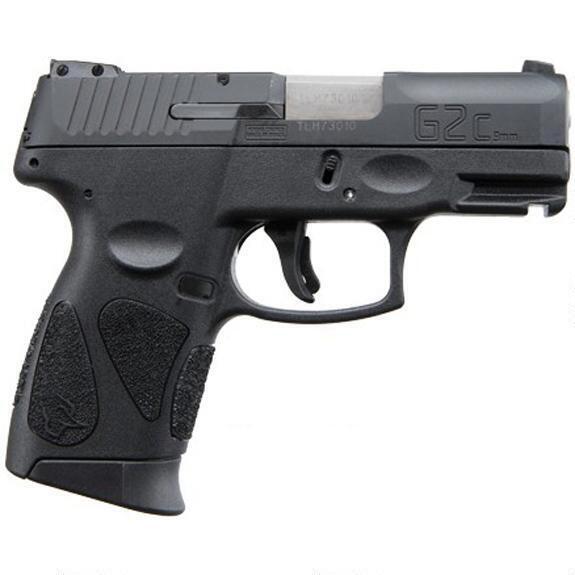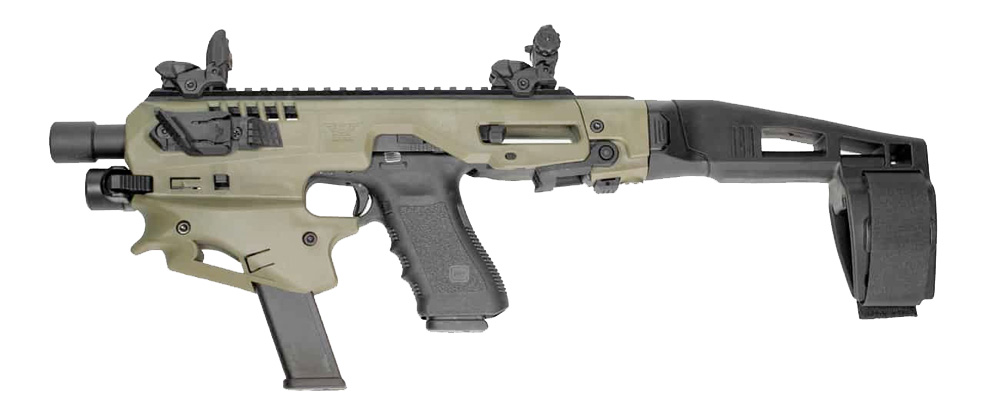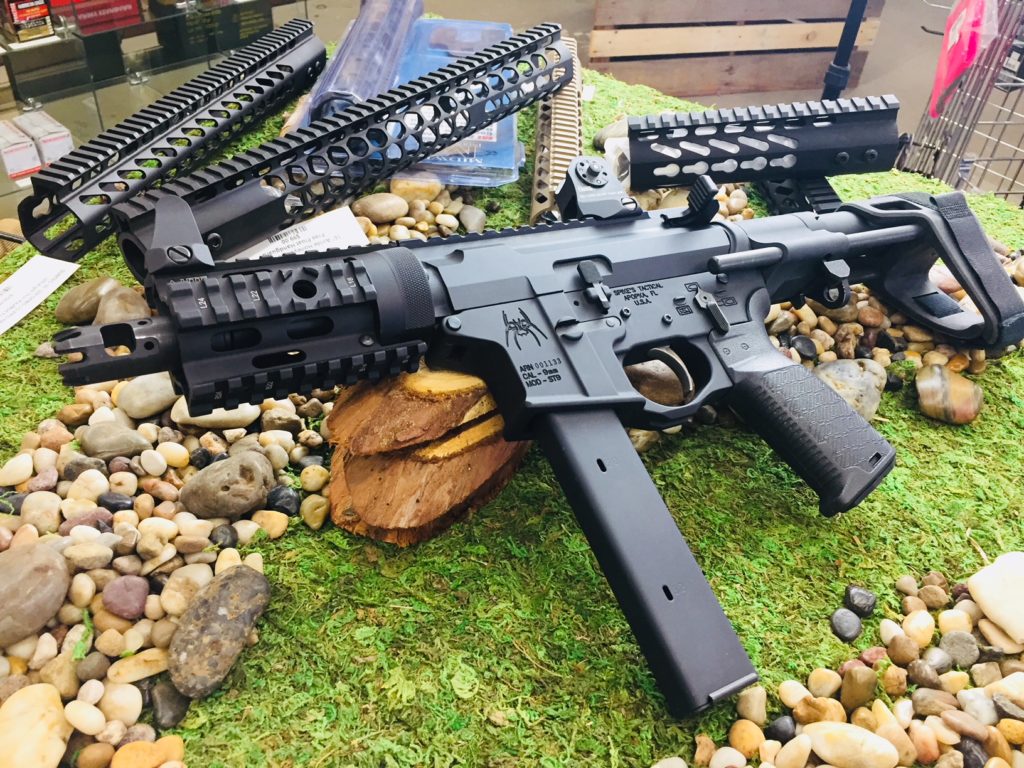Wilson Combat has released a new proprietary AR-15 cartridge dubbed the 300 HAM’R. Like all non-5.56 NATO AR-15 Calibers, the 300 HAM’R was developed to help the AR-15 punch above its weight in certain applications. Going by Wilson Combat’s marketing it’s quickly apparent that 300 HAM’R is squarely aimed at hunters looking for the ideal AR-based round for medium range deer and hog hunting.
Obviously the name 300 HAM’R invokes thoughts of a similarly named AR-15 cartridge, the 300 BLK (Blackout). So some might be wondering what the difference is. Indeed, that same Wilson Combat marketing seems to aim the majority of it’s comparisons against 300 BLK.
300 Ham’r shoots a .30 caliber bullet – the same bullet as the .308 Winchester cartridge. Many hunters love the .30 cal round – it’s a versatile bullet and a proven performer. Compared to smaller AR15 calibers, the larger, heavier .30 cal bullets stabilize better, making them less susceptible to wind drift and deflection. Wilson is offering 300 HAM’R ammunition with bullet weights from 110 grains to 150 grains
As many are aware, the AAC-developed 300 Blackout cartridge also fires a .30 bullet, but Wilson Combat claims the HAM’R enjoys a significant ballistic advantage over supersonic 300 BLK. Per Wilson Combat’s website, “The 300 HAM’R is capable of duplicating the proven ballistics of the legendary .30-30 Winchester from a comparable barrel length.”, and “…the 300 HAM’R has a solid 300FPS velocity and a 400FP energy advantage over factory 300 Blackout at the muzzle.”
That’s a big increase in performance, and certainly enough to make many AR owners (or would-be owners) sit up and take notice. And things get even more attractive, because like the 300 BLK cartridge, the only specialized component you need to shoot 300 HAM’R is the barrel. The bolt, magazines and everything else is standard mil-spec.
300 HAM’R or 300 BLK. Which is Better?
So did Wilson Combat really build a better mousetrap? Does the 300 HAM’R make 300 BLK obsolete? If you’ve thought about a 300 BLK build, should you be giving 300 HAM’R a hard look instead? Maybe…maybe not.
To really compare these two cartridges, it’s helpful to go back to the primary reason for their development in the first place. The 300 HAM’R was clearly created as a hard-hitting supersonic medium-range hunting round. On the other hand, 300 BLK was developed as a superior close-quarters combat alternative to 5.56 NATO that was capable of being effectively suppressed and fired from a short barrel. It started as a tactical round that grew into an expanded selection of supersonic options to allow it to address more civilian needs.
In other words, the original purpose of these two calibers are at the exact opposite end of the spectrum. It’s not exactly an apples-to-apples comparison. While considering ballistics at supersonic speeds, the numbers clearly favor the HAM’R. But on the other hand, it gives up the versatility that comes with the ability to shoot subsonic ammunition and short optimal barrel length that 300 BLK is predicated on. Depending on which direction you’re approaching it from, it could be just as fair to claim the 300 HAM’R is inferior to 300 BLK as it is the other way around.
So yes, if you wanted to say 300 HAM’R is the better performer through the narrow lens of only supersonic cartridges with mil-spec AR bolt compatibility, then you wouldn’t be lying. But 300 HAM’R is only “superior” if you conveniently leave out everything that the 300 BLK does better. If Wilson Combat wanted to tout ballistic performance against a truly similar AR cartridge (parts compatibility notwithstanding), 6.8 SPC would seemingly match up much closer to the 300 HAM’R than 300 BLK.
Who’s the 300 HAM’R Going to Benefit?
So who is realistically going to benefit from 300 HAM’R? Well, obviously someone looking to increase the hunting effectiveness of their mil-spec 5.56 NATO AR-15. Of course there are other established AR-15 options available for this purpose on the market as well. Wilson Combat claims their cartridge trumps those in some categories too, and as far as mil-spec part compatibility goes, advantage goes to 300 HAM’R as well. Build an upper with a 300 HAM’R barrel to swap on to their existing lower when the situation arises. Like 300 BLK, there’s no need for a dedicated bolt or magazines – one could conceivably just use their existing 5.56 Nato BCG (assuming it headspaces properly) and be ready to go.
On the other hand, 300 BLK might be a better choice if you want versatility. If most of your hunting is done at ranges under 200 yards, serviceable supersonic options are available. The shorter barrel requirements for 300 BLK also helps makes for a smaller, easier to maneuver package better suited to tight environments.
Obviously in a rifle configuration, 300 BLK still needs a 16″ barrel to be legal, but as an AR pistol or SBR, 300 BLK is going to be more optimal (let alone pleasant to carry around) in some environments than a long-barreled 300 HAM’R rifle. As a defensive round, 300 BLK makes a lot more sense. Even if you don’t shoot suppressed, subsonic 300 BLK is likely a much more viable home defense caliber for most compared to a supersonic rifle cartridge.
Finally, if you’ve already built an AR-15 in 6.5 Grendel or 6.8 SPC, you can probably take a pass on the 300 HAM’R. While 300 HAM’R may have a slight ballistic edge on paper (in certain circumstances) according to Wilson Combat, it would be hard to demonstrate enough appreciable real-world difference for most people to make the switch worthwhile.
As always, all arguments made for ‘X’ cartridge over ‘Y’ cartridge are predicated on the concept of “from an AR-15”. There are a plethora of other superior cartridges to anything AR-compatible if you’re willing to consider a firearm outside of the AR-15 pattern family. 300 HAM’R, 300 BLK, 6.8 SPC or 6.5 Grendel coming out of an AR-15 with an 18″ barrel may be vastly superior for short to medium range hunting compared to 5.56 NATO, but none of them have the ballistic effectiveness as .308 Winchester, 6.5 Creedmoor or dozens of other mainstream hunting rounds.
Of course all of the firearms required to shoot those calibers come with their own intrinsic strengths and weaknesses. Pros and Cons that could be argued until the end of time with no clear-cut winner. If you already own a mil-spec type AR-15, building an alternative caliber upper for hunting may take care of your needs just fine and save a few dollars vs buying a completely new firearm.
Market Factors
Of course, probably the biggest issue with 300 HAM’R right now is part availability and price of ammo. Wilson Combat – hardly known as a “budget” brand – is currently the only manufacturer producing rifles, components and ammunition at the time of this writing. Until this round begins to enjoy mainstream adoption (being a non-SAAMI, proprietary cartridge, that may never happen), any savings gained from not having to buy a specialized bolt or magazine will be quickly eaten-up in the upfront product purchase and ongoing ammo cost (at least for shooters who aren’t loading themselves).
Simply put, adopting the allegedly superior ballistics of the 300 HAM’R will be a pricey endeavor. Shooters will need to weigh that against the more available, affordable and similarly capable mainstream options currently occupying the same niche.
Wilson Combat may claim that the 300 HAM’R is a superior cartridge, but time will tell if the market agrees that its deliverables are worth the cost.








